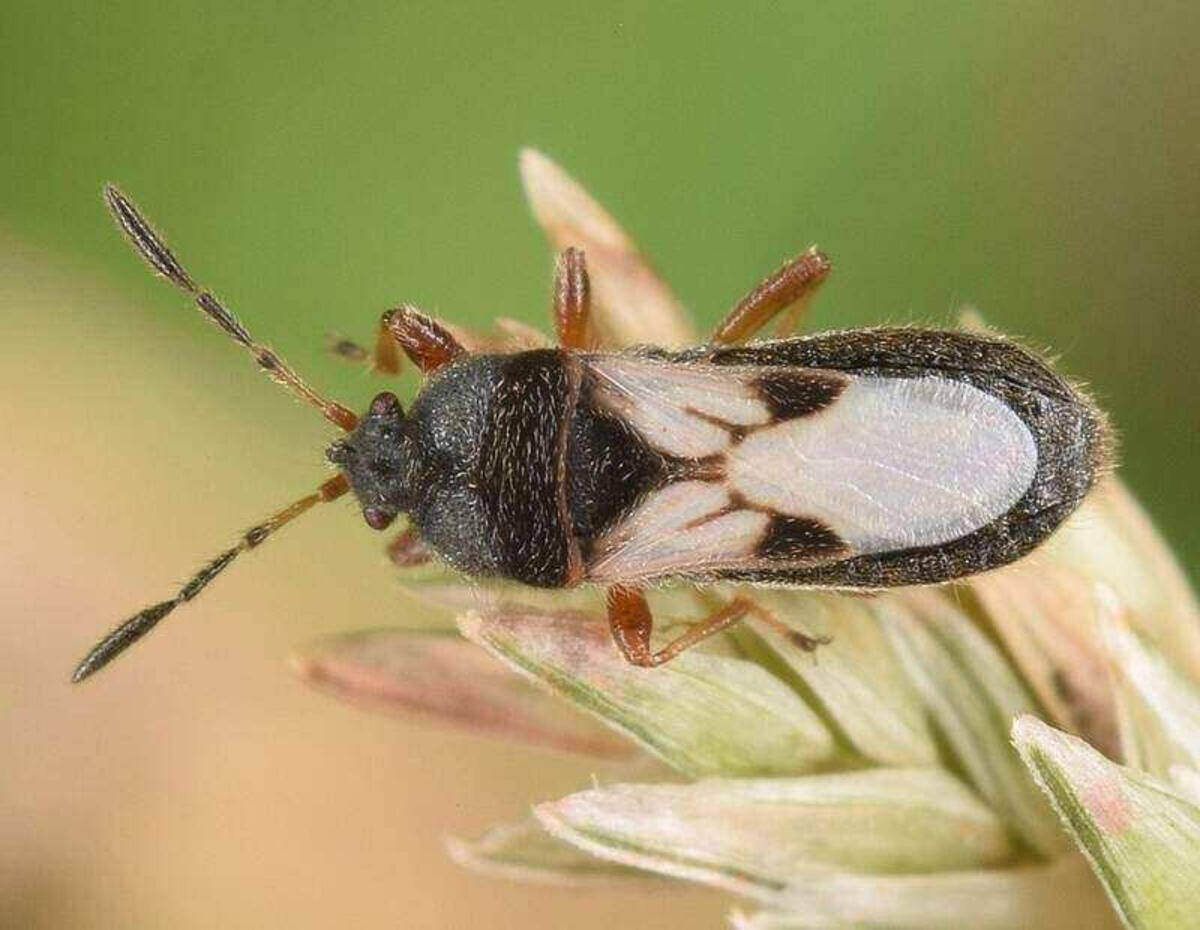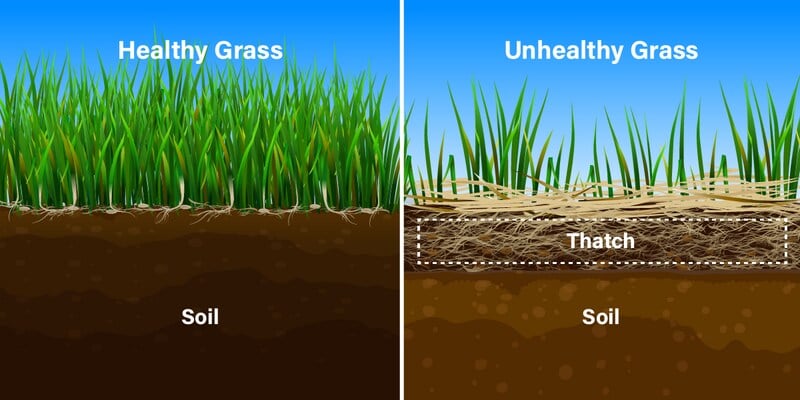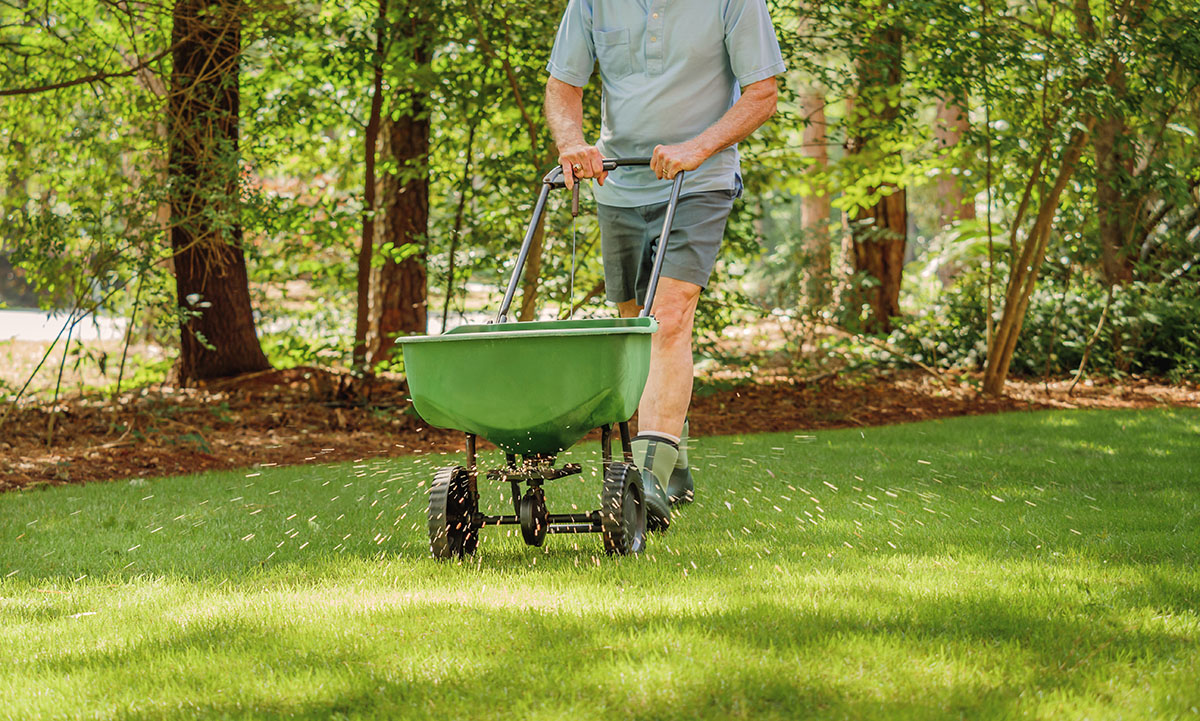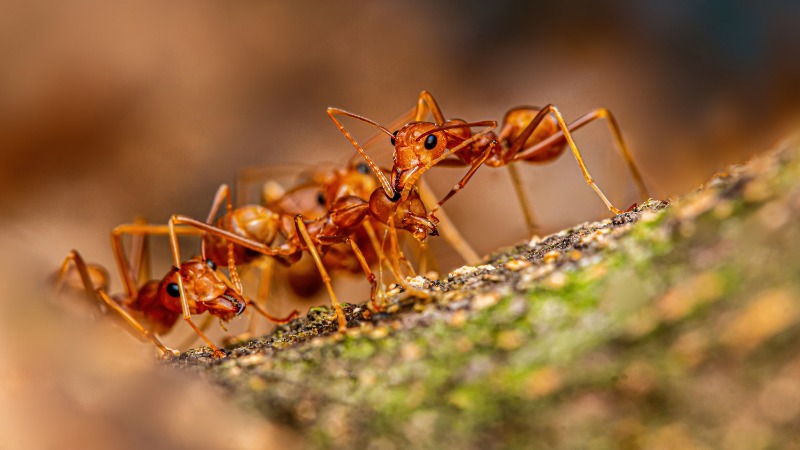
An expanding patch of brown, dead-looking grass, especially in St. Augustine lawns, is likely a sign of an active chinch bug infestation. To minimize the damage to your lawn, treat with insecticides for a quick knockdown.
For prevention and ongoing management, yearly dethatching is key. Excessive thatch creates an ideal environment for chinch bugs and is the greatest long-term threat to your lawn.
With tips from a Florida Extension expert, here are the best ways to get rid of chinch bugs:
How to Control Chinch Bugs in Your Lawn
| Chinch Bug Control Method | Effectiveness | Timeline |
| Proper lawn maintenance (dethatch, aerate, mow, water, fertilize) | Moderate High: dethatching | Long-term results |
| Remove grass and add shrubs, trees, and plants | Very high | Immediate and long-term results |
| Plant resistant turfgrass | High | Immediate and long-term results |
| Encourage natural enemies | Moderate | Long-term results |
| Use insecticides | High, but can lose effectiveness over time | Quick knockdown for active infestations; not an effective long-term strategy |
Chinch bugs are insects that enjoy hot, dry climates and are especially common in the South on St. Augustinegrass lawns. And though you’ll never get rid of them completely, the most effective way to control chinch bugs is simply to take good care of your lawn.
“Chinch bugs can be suppressed below damaging levels through proper turfgrass management…and judicial insecticide (use) when populations flare up,” says Adam G. Dale, associate professor and associate chair for Extension at the University of Florida.
A healthy lawn reduces the risk and severity of a chinch bug infestation and strengthens the grass to better withstand stressors, like insect feeding, when they occur.
Dethatch

| How dethatching gets rid of chinch bugs: Removing high levels of thatch removes overwintering and reproduction sites (i.e., habitat) for chinch bugs, decreasing the population. Dethatching also makes them easier to see in your lawn. |
When you’re managing chinch bugs, excessive thatch (a layer of dead and living roots, stems, and leaves) is the biggest problem. High levels of thatch (over 1/2 inch) attract chinch bugs because thatch creates places for them to hide.
To remove excess thatch, dethatch your lawn. The best times are late spring if you have warm-season grass or fall/early spring for cool-season Kentucky bluegrass.
Pro Tip: St. Augustinegrass tends to develop thatch more easily when it is over-watered or over-fertilized.
See Related: When to Dethatch Your Lawn
Aerate

| How aeration gets rid of chinch bugs: Aeration reduces thatch and strengthens your lawn’s overall health, especially if you have clay soils, which are common in some Southeastern states. If chinch bugs attack, a healthy lawn has more in reserve, helping it to bounce back. |
Though it’s less effective than dethatching, aeration also reduces the amount of thatch in your yard.
Core aeration works by pulling cores of soil (and thatch) from your lawn. This opens up your lawn so that fertilizer, oxygen, and water can filter down to the roots of the grass, creating a healthier, more resilient lawn.
Pro Tip: If you’d rather leave the heavy machinery to someone else, hire a LawnStarter pro to core aerate your lawn.
See Related: How to Aerate Your Lawn
Mow at the Right Height
| How mowing gets rid of chinch bugs: Not only will mowing at the right height strengthen your lawn against stressors like chinch bugs, but it also helps break down leaf litter in fall, reducing chinch bugs’ winter habitat. |
Cutting your lawn at the right mowing height is important to maintain healthy turfgrass. Grass cut at its ideal height, and 1/2 inch taller in summer, is able to make enough food for itself via photosynthesis and develop strong roots. Taller grass also helps shade the soil, reducing evaporation and maintaining higher moisture levels.
In addition, using a mulching mower to cut your turf returns valuable nutrients, like nitrogen, to the lawn. The extra nutrients also strengthen your grass during the summer fertilizer blackout season, which is common in places like Florida, where St. Augustinegrass is prevalent.
Pro Tip: Check out our article What’s the Best Height to Cut Your Grass? to learn the best height for your turf.
Irrigate Properly
| How proper irrigation gets rid of chinch bugs: Proper irrigation helps create a balanced turf — not too dry, which they love, and not too wet, which can encourage thatch. |
In general, give your lawn 1 inch of water per week, including rainfall, to keep your grass healthy and discourage pests. Watering deeply once or twice per week is ideal. But if you have sandy soil, which is common in some southern states like Florida, water 2-3 times per week.
Pro Tip: Excess thatch impedes the flow of water, so if you have excess thatch, simply watering more won’t be effective.
See Related: How Often Should I Water My Lawn?
Fertilize Appropriately

| How fertilizing properly gets rid of chinch bugs: As with overwatering, applying too much fertilizer contributes to excessive thatch. |
Moderate fertilization will keep your yard healthy and chinch bug-resistant:
- Don’t apply more than 3 to 4 pounds of nitrogen per 1,000 square feet per year as a general rule.
- Use a slow-release fertilizer.
- Apply only small amounts of fertilizer to your yard at a time. Usually, 0.5 to 1 pound per 1,000 square feet is sufficient.
Note: Fertilizer rates vary widely depending on your state (even your location within the state), grass type, soil type, etc. Check with your local Extension office to determine the fertilizer schedule that works best for your turf, and be mindful of fertilizer blackout dates.
See Related:
- When to Fertilize Your Lawn
- How to Fertilize Your Lawn
- The Best Lawn Fertilization Schedule and Tips for Florida
Remove Grass and Install Shrubs, Trees, and Other Plants
| How removing grass gets rid of chinch bugs: Chinch bugs feed on grass, especially stolons (above-ground stems). If you reduce their food supply, you reduce the number of chinch bugs able to survive in your lawn. |
“Currently, the only way to get rid of chinch bugs is to replace a lawn with a plant that isn’t a host for chinch bugs,” says Dale.
So the most effective way to get rid of chinch bugs is to reduce their current food source — your lawn — by adding things they won’t eat: shrubs, trees, and landscaping beds with other plant life.
Also, “Landscape design is very important in determining pest outbreaks like chinch bugs,” says Dale. He explains that a yard composed of only one turfgrass type (without other plant life) is more vulnerable to chinch bugs than a lawn with grass and plant beds, trees, shrubs, and herbaceous plants.
Short on time? Hire a landscaping pro to diversify your lawn with new beds, shrubs, trees, and plant life.
See Related:
Plant Resistant Turfgrasses
| How adding resistant turfgrass gets rid of chinch bugs: If chinch bugs are less likely to feed on your grass type, they’re unlikely to visit or overwinter in your lawn. |
Avoid planting any cultivar of St. Augustinegrass, which is the turfgrass species most susceptible to chinch bug invasions. Instead, choose a species of turfgrass that is resistant to chinch bugs.
- In warm-season lawns, centipedegrass is the most resistant against the southern chinch bug.
- In your cool-season yard, consider endophyte-enhanced perennial ryegrass, fine fescue, and tall fescue for overseeding or planting a new lawn.
Pro Tip: Use caution when selecting warm-season grass: “In the South, the southern chinch bug prefers to feed on St. Augustinegrass, (but) will also feed on Zoysiagrass and Bermudagrass,” says Dale.
See Related:
Encourage Natural Enemies

| How natural enemies get rid of chinch bugs: Don’t let humans be the only enemy of chinch bugs in your yard. Encourage a wide range of insect predators to keep chinch bug levels low. |
Chinch bugs have several natural predators that eat away at your chinch bug problem:
- Fire ants
- Big-eyed bugs
- Earwigs
- Minute pirate bugs
- Spiders
- Wasps
To encourage beneficial predators:
- Avoid using insecticides that kill them, and
- Create a wildlife-friendly habitat. Instead of a lawn full of grass, add beds that include a variety of native plants, trees, and shrubs, creating 4 seasons of food and shelter. Look for seed packets labeled “insect mix” or “beneficial bug mix” if you want to start small.
Pro Tip: Big-eyed bugs look similar to chinch bugs (but have bigger eyes). Take an insect to your local Extension office for a proper ID before you consider treatment.
Use Insecticides to Treat an Infestation
Ideally, you should attempt to treat your chinch bug infestation with good lawn care practices or natural methods before turning to chemical treatments. But when there are more than 15 to 25 chinch bugs per square foot, an insecticide application may be necessary to prevent damage to your lawn.
For homeowners, the best curative insecticides for chinch bugs are contact insecticides, specifically carbaryl or certain pyrethroid pesticides, including:
- Bifenthrin
- Cyfluthrin
- Lambda-cyhalothrin
- Permethrin
“If proper insecticides are applied correctly, chinch bug densities can be reduced to below damaging levels within a few days,” says Dale. But insecticides can’t be your only strategy against outbreaks.
“In addition to unusually high densities [in 2024], there was an incredibly high rate of insecticide application failure to suppress outbreaks,” he says, which suggests that chinch bugs are becoming resistant to the insecticides that are available.
And without new options on the horizon, he says, these insecticides may become increasingly ineffective against chinch bugs. So, for the best results, homeowners should rely on plant diversity, preventive lawn care practices, and natural methods before chemical treatments.
Pre-Application Tip: Before you apply chemicals, dethatch the lawn. Excessive levels of thatch prevent insecticides from seeping into the grass below.
Use Insecticides to Prevent an Infestation
If you’re interested in preventative insecticides, hire a lawn treatment pro to apply these in late spring or early summer in areas where chinch bugs have been a recurring problem. Preventive chemical control products are not usually sold in quantities that are practical for homeowners. Also, in many states, only licensed applicators can purchase them.
Call a Professional

“If a homeowner prioritizes having a dense, green, lush turfgrass lawn, then they should always hire a professional to maintain it. Chinch bugs (and other pests) are challenging and must be proactively managed. Once detected, if not addressed immediately, their feeding activity will quickly kill a lawn,” says Dale.
For a severe chinch bug problem, hire a lawn treatment pro to help if you want to save your lawn. They’ll often need to make multiple applications several weeks apart (there are several generations of chinch bugs per year in Southern states) and rotate chemical classes to minimize pesticide resistance.
Getting Rid of Chinch Bugs is Not a Cinch: Call a Pro
When dead patches of brown grass appear on your lawn, it might be a sign of chinch bug infestation. Modify your irrigation, fertilization, mowing, or dethatching as needed to restore your grass to health again.
For significant infestations, contact a LawnStarter lawn treatment pro to apply chinch bug treatment and a local lawn care pro to dethatch and mow the lawn going forward, helping your lawn to recover and thrive.
Sources:
- Adam G. Dale, associate chair for Extension and associate professor of turfgrass and ornamental entomology, Gainesville, FL. Personal interview.
- “Big-Eyed Bug.” By David Orr, Extension specialist and associate professor. NC State Extension.
- “Chinch Bug.” By Phil Nixon. University of Illinois Extension.
- “Chinch Bug.” Michigan State University Extension.
- “Chinch Bugs in Home Lawns.” By Paul Heller, professor of entomology. Penn State Extension.
- “Chinch Bugs.” University of Georgia Extension.
- “Contact Insecticides.” Texas A&M AgriLife.
- “Endophyte-Enhanced Grasses.” UMass Extension Turf Program.
- “Southern Chinch Bug, Blissus insularis Barber.” By Stacy Woods, Extension expert. University of Florida.
- “The Chinch Bug Fertilizer Relationship.” University of Florida.
Main Image: Chinch bug. Photo Credit: Christina Butler / Wikimedia Commons / CC BY 2.0